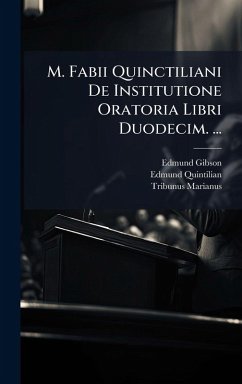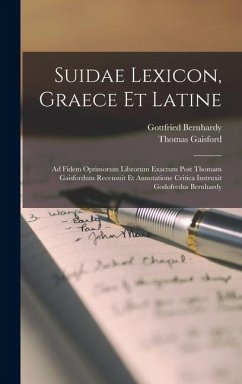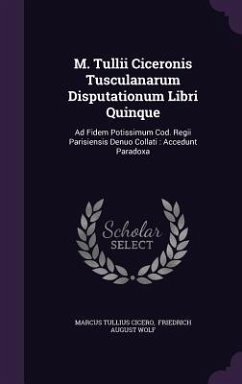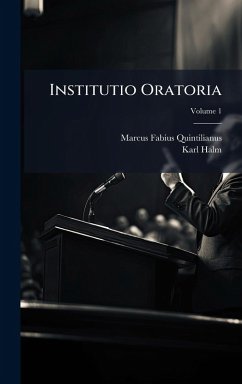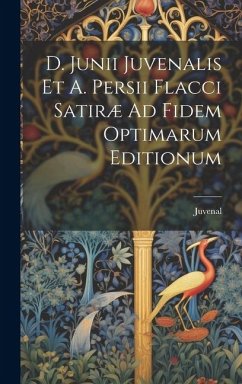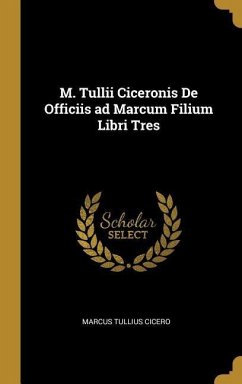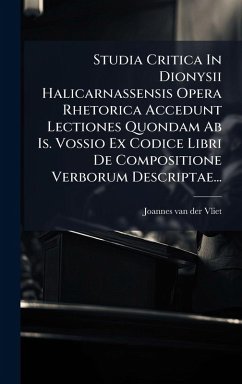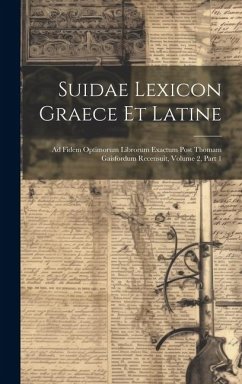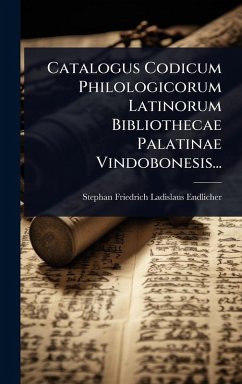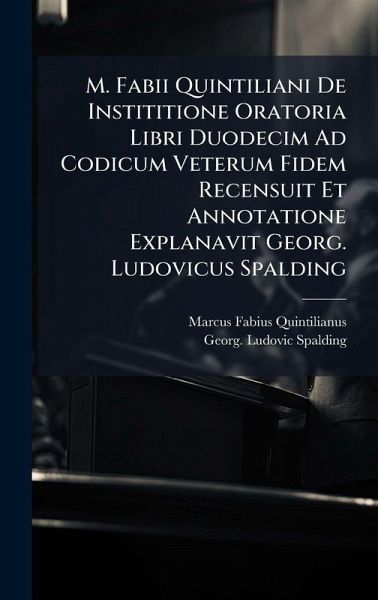
M. Fabii Quintiliani De Instititione Oratoria Libri Duodecim Ad Codicum Veterum Fidem Recensuit Et Annotatione Explanavit Georg. Ludovicus Spalding
Versandkostenfrei!
Versandfertig in über 4 Wochen
40,99 €
inkl. MwSt.
Weitere Ausgaben:

PAYBACK Punkte
20 °P sammeln!
This edition of Marcus Fabius Quintilianus's "De Institutione Oratoria Libri Duodecim" (Institutes of Oratory) has been meticulously revised and annotated by Georg. Ludovicus Spalding, adhering to the authenticity of ancient codices. Quintilian's comprehensive treatise on rhetoric, spanning twelve books, remains a cornerstone of classical education, offering profound insights into the art of public speaking, argumentation, and literary style. Spalding's annotations provide invaluable context and elucidate Quintilian's teachings for modern readers. "Institutes of Oratory" covers a wide range of...
This edition of Marcus Fabius Quintilianus's "De Institutione Oratoria Libri Duodecim" (Institutes of Oratory) has been meticulously revised and annotated by Georg. Ludovicus Spalding, adhering to the authenticity of ancient codices. Quintilian's comprehensive treatise on rhetoric, spanning twelve books, remains a cornerstone of classical education, offering profound insights into the art of public speaking, argumentation, and literary style. Spalding's annotations provide invaluable context and elucidate Quintilian's teachings for modern readers. "Institutes of Oratory" covers a wide range of topics, from the foundational principles of grammar and composition to the intricacies of persuasive oratory and the moral responsibilities of the speaker. This edition is an essential resource for scholars, students, and anyone interested in the history of rhetoric and the enduring legacy of classical thought. It offers a window into the educational practices of ancient Rome and the development of Western intellectual traditions. This work has been selected by scholars as being culturally important, and is part of the knowledge base of civilization as we know it. This work was reproduced from the original artifact, and remains as true to the original work as possible. Therefore, you will see the original copyright references, library stamps (as most of these works have been housed in our most important libraries around the world), and other notations in the work. This work is in the public domain in the United States of America, and possibly other nations. Within the United States, you may freely copy and distribute this work, as no entity (individual or corporate) has a copyright on the body of the work. As a reproduction of a historical artifact, this work may contain missing or blurred pages, poor pictures, errant marks, etc. Scholars believe, and we concur, that this work is important enough to be preserved, reproduced, and made generally available to the public. We appreciate your support of the preservation process, and thank you for being an important part of keeping this knowledge alive and relevant.



